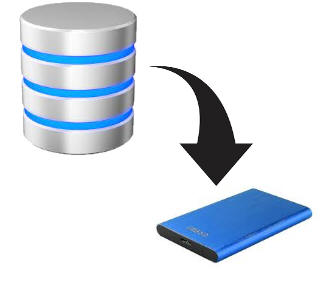

Migrating from MSSQL to MySQL involves transferring your database schema, tables, and data from one database management system to another. One also has to migrate the Triggers, procedures. The migration of Triggers, Stored procedures are quite difficult because of Syntax Changes, like for example if you are migrating from MSSQL to MySQL, in MSSQL the stored procedures would be written in T-SQL language, whereas, MySQL uses a different scripting language.
It's a time-consuming migration and requires a lot of planning and patience. It also requires the use of cross-database migration tools such as Data Loader or MySQL Migration Wizard - part of MySQL Workbench
You might also be interested in: Top 3 tools for converting MSSQL to MySQL
Here's a step-by-step guide to help you with the process:

1.1 Analyze your MSSQL database: Take an inventory of the databases, tables, stored procedures, views, and other database objects in your MSSQL database.

1.2 Review your MySQL requirements: Make sure your target MySQL server
meets the necessary requirements in terms of version, storage capacity, and
configuration.
1.3 Backup your MSSQL database: Before starting the migration process, create a backup of your MSSQL database to ensure you have a safe copy in case anything goes wrong.

2.1 Install MySQL: Download and install the MySQL server on
the machine where you plan to migrate the database. Ensure you have the
necessary permissions to create databases and tables.
2.2 Configure
MySQL: Adjust the MySQL configuration settings as per your requirements.
This may include adjusting memory allocation, buffer pool size, and other
parameters to optimize MySQL's performance.
3.1 Create the target database: In MySQL, create a new database
with the desired name to hold your migrated data.
3.2 Migrate the
schema: Extract the schema definition from your MSSQL database, including
tables, indexes, constraints, and triggers. Recreate these objects in the
MySQL database using SQL statements or a database migration tool.
3.3
Convert data types: Identify any data type differences between MSSQL and
MySQL and make the necessary adjustments in your schema migration process.
For example, MSSQL's "datetime" data type is equivalent to MySQL's "datetime"
or "timestamp" data type.
Here's a comparison of some commonly used data
types in MSSQL and their equivalents in MySQL:
Integer Data Types:
MSSQL: int, bigint, smallint, tinyint
MySQL: int, bigint, smallint,
tinyint
Decimal and Numeric Data Types:
MSSQL: decimal, numeric
MySQL: decimal, numeric
Floating-Point Data Types:
MSSQL: float,
real
MySQL: float, double
Character Data Types:
MSSQL: char,
varchar, nchar, nvarchar
MySQL: char, varchar, char, varchar
Binary Data Types:
MSSQL: binary, varbinary
MySQL: binary, varbinary
Date and Time Data Types:
MSSQL: datetime, date, time
MySQL:
datetime, date, time
Boolean Data Type:
MSSQL: bit
MySQL:
tinyint(1) or bool
Text Data Types:
MSSQL: text, ntext
MySQL:
text, longtext
It's important to note that while the data types
listed above are commonly used, there may be additional data types available
in both MSSQL and MySQL, depending on the specific versions and
configurations. Additionally, the maximum allowed sizes and precision of
these data types may vary between the two database systems.
During
the migration process, it's crucial to carefully review and map the data
types from the source (MSSQL) to the target (MySQL) to ensure compatibility
and maintain data integrity.
3.4 Migrate stored procedures,
views, and functions: If your MSSQL database includes stored procedures,
views, or user-defined functions, recreate them in MySQL. Review and modify
the syntax or logic as needed, as there may be differences in the SQL syntax
between the two systems.
4.1 Export
data from MSSQL: Extract the data from your MSSQL database tables using
tools like SQL Server Management Studio or the bcp utility, and save it in a
suitable format such as CSV or SQL dump.
See: How to export data from MSSQL
using SQL Server Management Studio
4.2 Convert data formats: If
required, convert the data formats from the MSSQL format to MySQL-compatible
format. For example, you may need to adjust date formats or handle NULL
values.
4.3 Import data into MySQL: Use the MySQL command-line tool
or a graphical tool like MySQL Workbench to import the data into the
corresponding tables in your MySQL database. Ensure the target tables are
empty or properly truncated before the import.
5.1 Validate the data: After the data migration, compare a
sample of data between the MSSQL and MySQL databases to ensure the migration
process was successful. Verify the row counts, primary keys, and other
critical data points.
5.2 Test application compatibility: Update your
application configuration to connect to the MySQL database and perform
thorough testing to ensure your application works seamlessly with the new
database.
See also: Testing and Validating data after database migration
6.1 Update connection strings and configurations: Once you have verified the
successful migration and tested your application, update any relevant
connection strings, configurations, or scripts to point to the MySQL
database.
6.2 Implement data synchronization: If you need to keep the
MSSQL database operational during the migration process, set up a data
synchronization mechanism to ensure any changes made in MSSQL are replicated
to the MySQL database until the complete migration is finished.
6.3
Decommission the MSSQL database: Once you are confident that the migration
is successful and your application is functioning correctly with MySQL,
decommission the MSSQL database.
Remember to thoroughly plan and test
the migration process in a non-production environment before attempting it
in a live environment. Database migrations can be complex, so it's crucial
to have a solid backup strategy in place to avoid data loss or corruption.